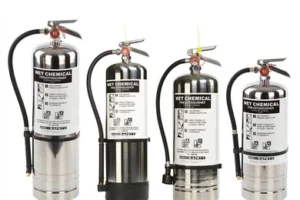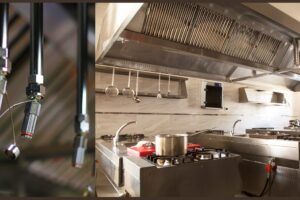Inspecting fusible links during your semi-annual Fire Suppression Inspection is crucial. Unfortunately, it’s one of the most overlooked tasks during service. This can happen because of the high temperatures of the appliances or the regular activities of your system while the inspection is ongoing. However, neglecting to replace these links each time can significantly impact your system’s effectiveness in case of a fire or, worse, lead to an accidental system discharge during operation.
The role of fire suppression links is pivotal in automatically detecting the suppression system when a fire occurs in your commercial kitchen. To comply with NFPA 17A, it’s essential to change these links at the proper intervals, using the correct heat link for appliances, and this should be done every six months. A practical way to ensure this is happening is to ask your service provider to replace the links during each service with ones dated for the current year. At Boss Fire Protection, we document these replacements with photo reporting, assuring our customers that the links are updated every service.
Now, let’s delve into how a fusible link works:
Step 1: Normal Operations During regular kitchen operations, the fusible link is in a solid state, maintaining the connection in the fire suppression system.
Step 2: Temperature Rise If a fire occurs, the temperature rises in the vicinity of the link. Different links respond to specific temperature thresholds.
Step 3: Melting Point As the temperature surpasses the link’s designed melting point, the link begins to soften and eventually melts.
Step 4: Mechanical Release Once melted, the fusible link releases a mechanism that activates the fire suppression system, initiating the discharge of fire suppressant to control the flames.
If you have any questions, call us at 972-704-1821. Our team is ready to answer queries, schedule reviews of your system, and provide valuable tips to ensure your protection.





